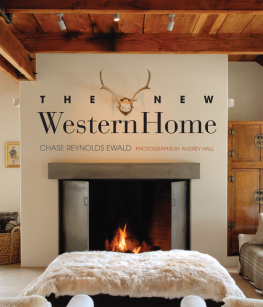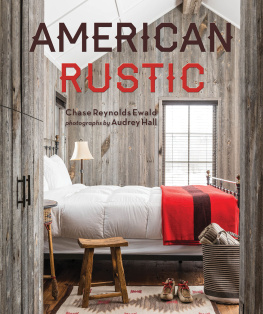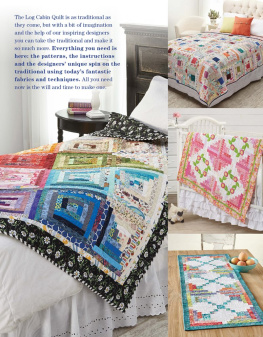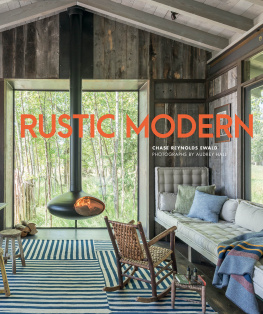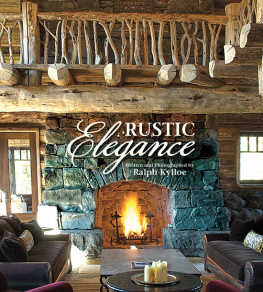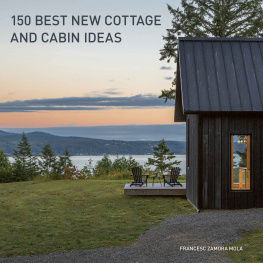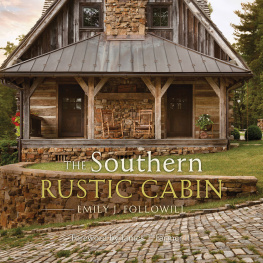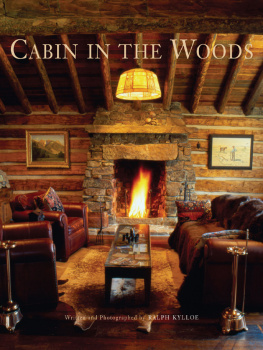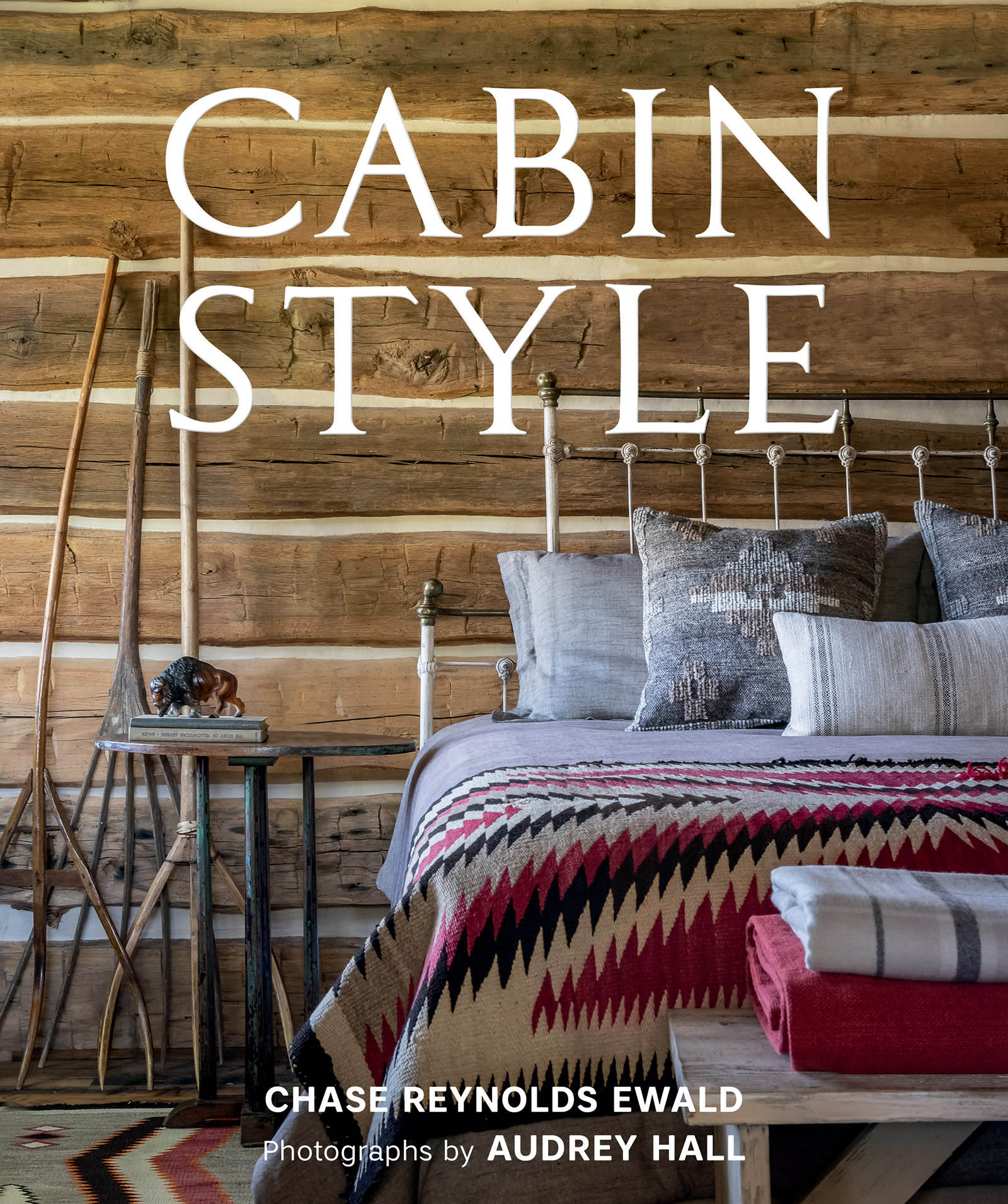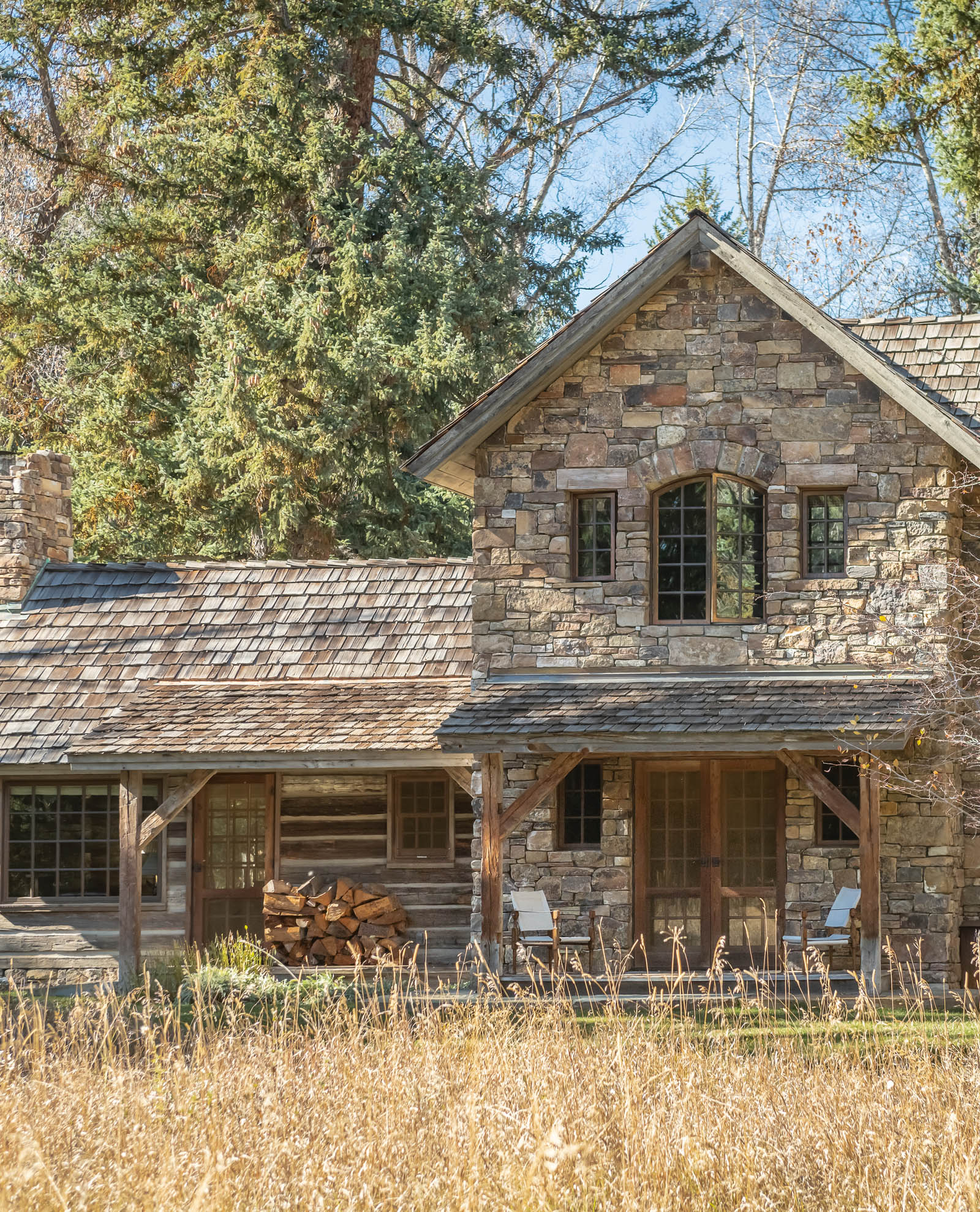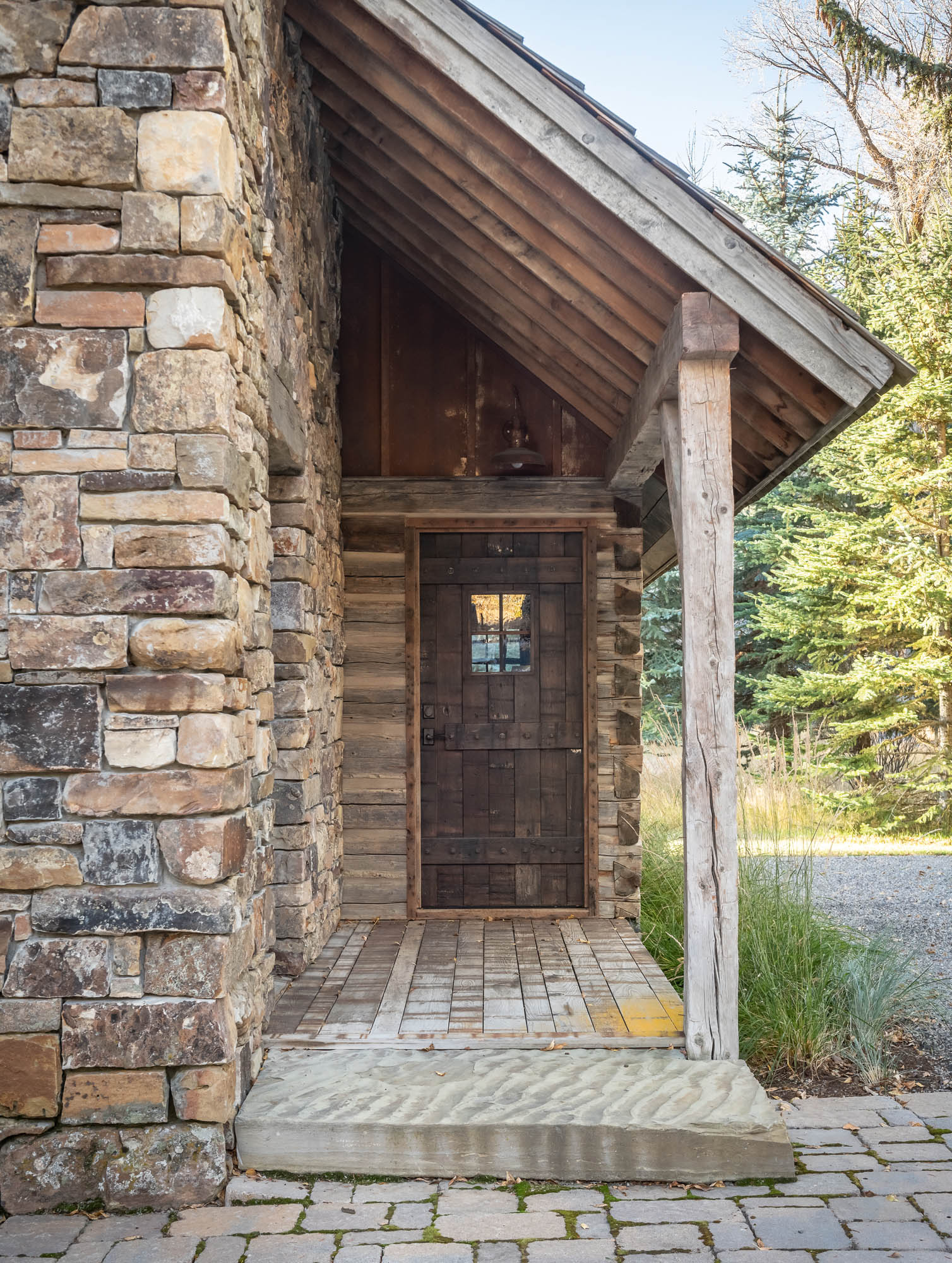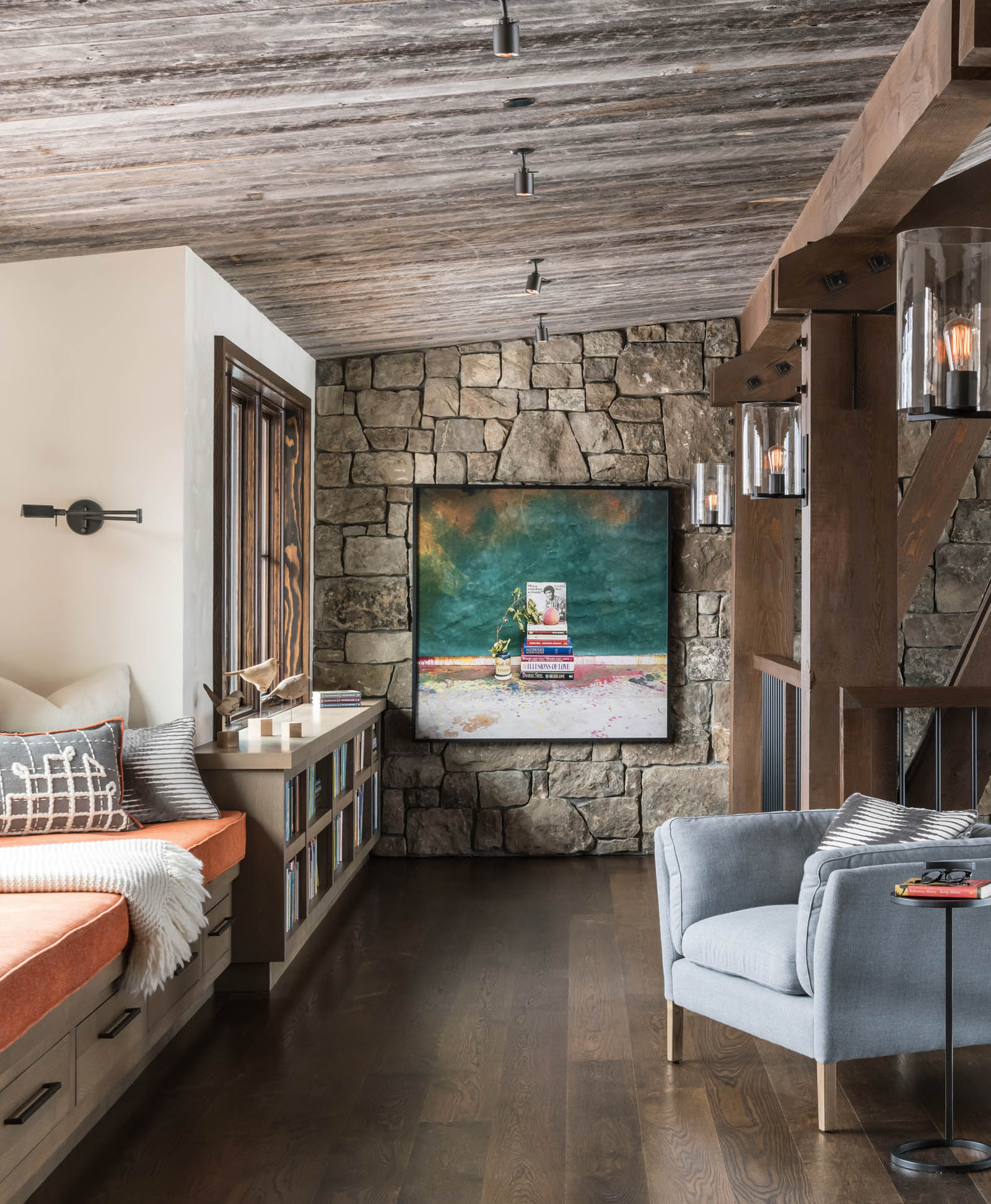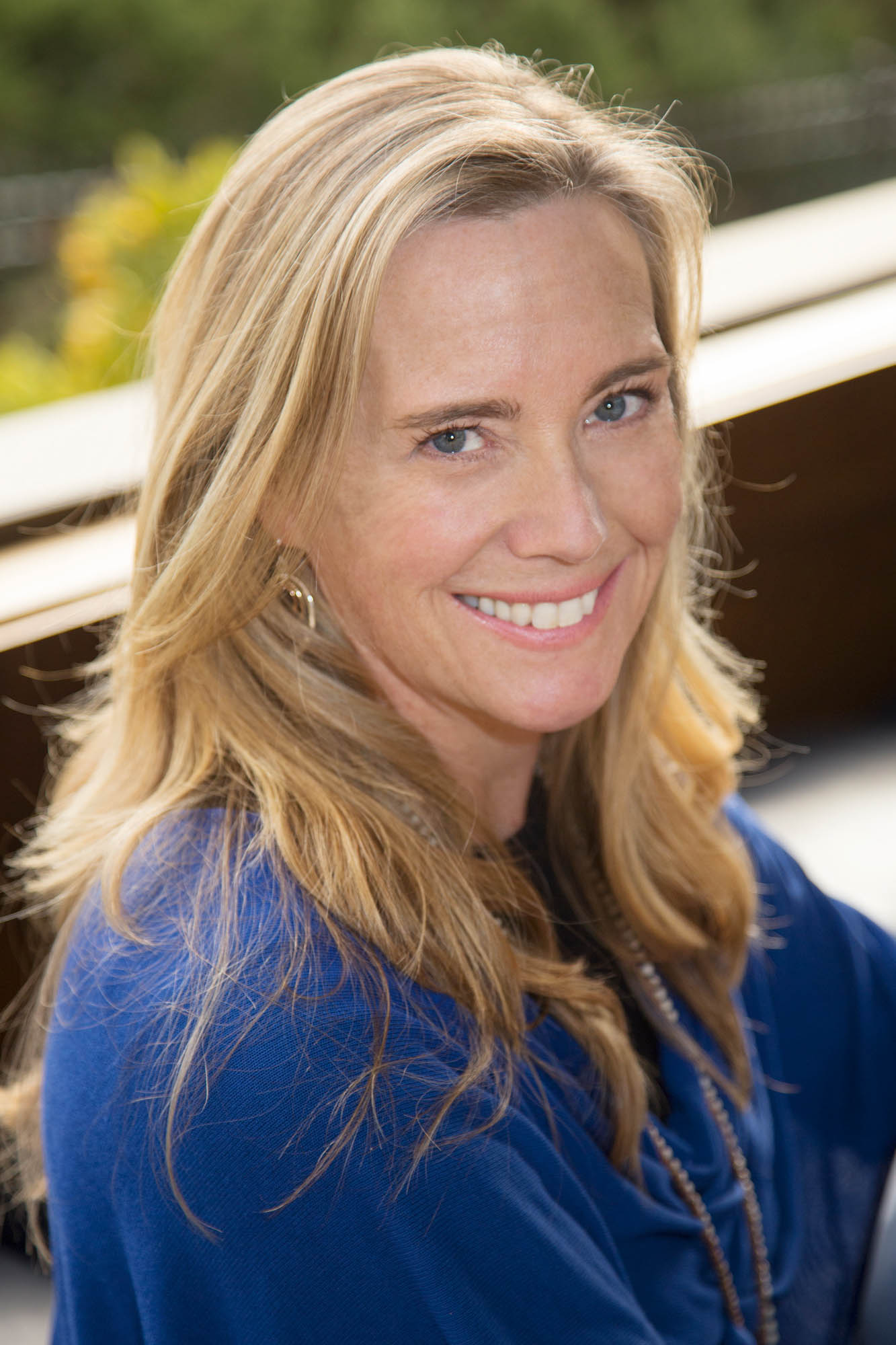Cabin Style
Chase Reynolds Ewald
Photographs by Audrey Hall
Digital Edition 1.0
Text 2019 Chase Reynolds Ewald
Photographs 2019 Audrey Hall
Published by
Gibbs Smith
P.O. Box 667
Layton, Utah 84041
1.800.835.4993 orders
www.gibbs-smith.com
Library of Congress Cataloging-in-Publication Data
Names: Ewald, Chase Reynolds, 1963- author. | Hall, Audrey,photographer.
Title: Cabin style / Chase Reynolds Ewald ; photographs by AudreyHall.
Description: First edition. | Layton, Utah : Gibbs Smith, [2019]
Identifiers: LCCN 2018060846 | ISBN 9781423652472 (ebook)
Subjects: LCSH: Log cabinsUnited States. | Vacation homesUnited States.| Second homesUnited States. | Decoration and ornament, RusticUnited States. |Architecture, Modern21st century.
Classification: LCC NA8470 .E93 2019 | DDC 728.7/30973dc23
LC record available at https://lccn.loc.gov/2018060846
For Deb, who so generously shares her horses, her dogs, and herRocky Mountain home.
CRE
To my sister, Patty, in her loving memory.
AH
Contents
Acknowledgments
Cabin Style, ourfifth collaboration, represents the culmination of many miles on the road, manymonths in the making, and many hours in the design and polishing, all resting onmany decades of sustained effort on the part of the architects, designers, builders,craftspeople, and artists whose work is showcased in these pages.
We so greatly appreciate the generous homeowners who, at inconvenienceto themselves, allow us to feature their homes. They do it for the sake of thedesigners and builders so their work can be shared, as it so richly deserves.
We couldnt have done it without the unsung heroes working behind thescenes to make it all happen, particularly Becky Traucht from JLF Architects, DarceyPrichard from CLB Architects, Libby Delgado from Locati Architects, Deborah Monaghanfrom Envi Design, and a score of others who keep the wheels turning smoothly so thedesign luminaries are free to create their work. A huge thanks also to thecaretakers, managers, and administrative assistants who provide access andcoordinate schedules.
We greatly appreciate the magazine editors and art directors with whomwe regularly work, including Darla Worden and Loneta Showell at Mountain Living, Christine Rogeland Dominique Fultz at Western Art andArchitecture, Corinne Garcia and Geoff Hill at Big Sky Journal, Jennifer Kopf andMaribeth Jones at Country Living, and Ken Amorosano at Cowgirl forproviding a forum for showcasing contemporary design in the most beautiful cornersof America. Thanks to their efforts, one doesnt have to travel or own a countryhome to experience the extraordinary architecture and design being producedtoday.
The staff at Gibbs Smith has done a wonderful job with all our books,for which we are truly grateful. Our tireless and unflappable longtime editor MadgeBaird answers emails at all hours of the night and weekends; she keeps pages movingthrough the process with efficiency, accuracy, professional expertise, and kindness.Book designers Sheryl Dickert, Renee Bond, and Virginia Brimhall Snow did justice tothe beauty of the homes on the first go-round, while also accepting requests andlate additions with grace. Thanks to the vision of firm founder Gibbs Smithwhoseloss we all feel so profoundly and whose keen ear for a story launched so manybooksthe professionals at Gibbs Smith present our work in the best possiblelight.
We owe a huge debt of gratitude to the photo shoot teamKristenNewbern, Alexander Simpson, Daniel Caudill, Ezra Olson, Jeni Fleming, Mary Grace,Hollie Wood, Liz Strong, and Amanda Jordanfor helping style and bring the homes tolife. Audrey thanks her family and husband, Todd Harris, for lending moral supportwhile she pursues these projects, as well as for endlesscups of tea to keep her moving forward throughout the sometimes laborious process ofproducing them. Chase couldnt accomplish anything without the encouragement of herfriends, her far-flung pen pals who keep her company during long hours at thecomputer, and her family. Her four daughters, Addie, Jessie, Ross, and Katherine,amaze and inspire her every day; her husband, Charles, makes it all possible.
CRE and AH
The Author andPhotographer
Photo by Jocelyn Knight Photography
Chase Reynolds Ewald has been writing about art, travel, design, food,and rustic style for more than twenty-five years. She is an active freelancer andthe author of ten books. A graduate of Yale and the Graduate School of Journalism atU.C. Berkeley, she lives in northern California.
Photo by Susan Stella
Rooted in the dirt of the American West, Audrey Halls photographs areformed by the unbridled spirit of its land. Her images about people and place arewidely featured, from social campaigns to magazines and television. This is hertwelfth book.
Introduction
T he word cabin inevitably evokes a vision ofa sturdy, modestly sized stacked-log structure, usually featuring a stone fireplacefrom which a curl of smoke wafts into the sky. This idyllic dwelling is typicallyenvisioned as being tucked amongst trees, sometimes situated by a mountain streamand often with an enviable mountain or lake prospecta true retreat.
One aspect of the enduring appeal of the cabin is that the morerestrained the size and palette of the dwelling, the more one is open to and able toappreciate the nature within which it is immersed. Traditionally built with smallwindows and dark logs, it has long been characterized by dark and cavelikeinteriors, leaving it cut off from the outdoors. This was partly due to thelimitations of the materials and partly by design: the more closed off from nature acabin feels, the more it becomes a refuge from the elements.
The ideal of the cabin has transformed at a rapid pace in recent yearsdue to evolutions in taste, patterns of use, and advances in technology. It nolonger needs to be small, or cut off from the outdoors, or suffer from darkinteriors. Todays cabins enjoy the best of both worlds. They are open to nature,with more glazing and doorways and outdoor living spaces, both covered and exposedto the elements. Yet they still retain a coziness and warmth that enhances the senseof their sheltering aspect.
Contemporary cabin style is expressed in a multitude ofnontraditional, cabinlike structures. The elements of a cabinwood, stone,sheltering eaves, cozy interiors, adjacent outdoor spacescan be combined withnontraditional elements such as flat roofs, steel details, floor-to-ceiling glass,and aesthetic influences from around the world. The cabin ideal today might beexpressed as a small house constructed of reclaimed wood and glass on a hugeconservation property, furnished with a hint of eastern influence, and orientedtoward its unique feature: in one case, natural hot springs and a phenomenal view ofthe Sawtooth Mountains. It can include a slopeside ski home imbued with color andunique verve, or, conversely, a European-influenced chalet striking in itssophistication and restraint. It might be a low-slung, 1950s repurposed ranch housefeaturing a long porch with rocking chairs, its window trim painted red to highlightthe extraordinary Big Horn mountain views reflected in the glass. It could be abespoke reclaimed timber home in which every item, from the building itself tostairs to metalwork, is handcrafted by master artisans. Alternatively, cabin stylecan be expressed in dramatic renovations of dated log homes from the 1990s; in suchhomes, a coat of black or white paint can utterly transform the spaces whilehighlighting the tactile nature of the log experience.


